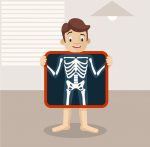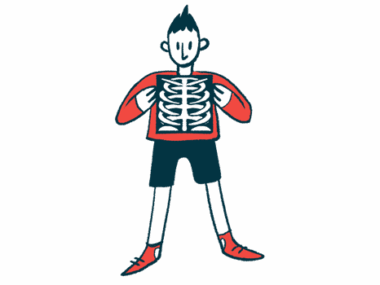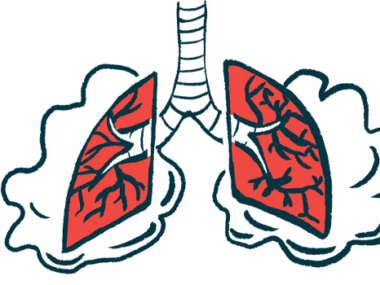My son’s experience with scoliosis and Prader-Willi syndrome
Curvature of the spine is common among those with PWS
Written by |

Scoliosis is common among people with Prader-Willi syndrome (PWS). I am active in the PWS community and have seen multiple people with the syndrome whose bodies were severely compromised by scoliosis, or an abnormal curvature of the spine. In my experience, older people with PWS and scoliosis often haven’t had corrective spinal surgery.
My adult son, Robert, has both conditions. When Robert was 7, our endocrinologist at Gillette Children’s Hospital in St. Paul, Minnesota, was one of the first doctors to recommend growth hormone therapy for Robert’s PWS. He noted, however, that the treatment could accelerate Robert’s scoliosis, which wasn’t severe at the time. Then he explained that it might also help to control Robert’s weight.
Those words were music to my ears. Even at 7, our son was gaining weight at an alarming rate. The endocrinologist said growth hormone therapy could help increase Robert’s height and muscle mass as well.
By age 8, Robert’s weight gain had slowed, but his scoliosis had worsened. We were referred to an orthopedic surgeon who suggested that Robert wear a specialized vest day and night to slow the progression of the curvature.
This meant we would be spending a lot more time at Gillette Children’s, this time in the assistive technology department. Technicians made a fiber cast of Robert’s upper body, which was used to create a plastic model with Velcro straps. Appointments for adjustments were frequent.
Undergoing spinal fusion surgery
Still, three years later, doctors recommended a full spinal fusion. The curve in our son’s spine looked like an “S.” The surgeon had to correct both top and bottom curves to about 46 degrees, straightening the curves by half.
The surgery involved anchoring a titanium rod to Robert’s spine using bone grafts and screws. Our surgeon told us that without a bone graft, the spine could bend the rod. We had confidence in the team, but waiting for the hourslong procedure to be over was agony.
Our young patient was discharged a week after surgery. We had a hospital bed delivered to the lower level of our home, which had an adjacent bathroom. Thankfully, we had a nurse in the family — my sister — to assist with care.
Robert was advised to walk every day as therapy. It was a laborious process encouraging him to move faster. If I had a nickel for every time I said, “Could you move a little faster?” I would be a rich woman.
My sister soon noticed that Robert was picking at the lower part of his incision. Skin picking is a frightful compulsion related to PWS. Admonishing the person generally has no effect. We were terrified the picking would lead to an infection, so we covered the incision with Tegaderm, a kind of medical dressing that adhered to the skin but not to the incision.
While Robert continued picking, bandaging the wound allowed it to heal. He still has a sizable scarred area on his lower back from the picking.
At one point during his recovery, a member of Robert’s medical team mentioned that screws were anchoring his titanium rod. Robert heard this and couldn’t let it go. At every appointment with our surgeon from then on, he would state emphatically, “You have to take these screws out. They hurt!” The surgeon would reassure him each time that the screws weren’t a problem, and then move on.
This can be a symptom of PWS: becoming fixated on a topic and being unable to let it go. You cannot convince someone with PWS that they are wrong. I’ve found that changing the subject and not challenging them works best.
Eventually, Robert was able to get back to the sports he loved, including skiing, horseback riding, and swimming. He’s now 36 and is physically active at the group home where he lives. He works out several times a week, doing both cardio and weight training.
He continues to ride horses with me and has beautiful posture thanks to the fusion. I attach a long lead rope to his horse and encourage it to trot and canter, a slow gallop. Surprisingly, despite his low muscle tone, he has never fallen from the saddle. Robert says our horse is his kindred spirit, “because he is always looking for food.”
Note: Prader-Willi Syndrome News is strictly a news and information website about the disease. It does not provide medical advice, diagnosis, or treatment. This content is not intended to be a substitute for professional medical advice, diagnosis, or treatment. Always seek the advice of your physician or other qualified health provider with any questions you may have regarding a medical condition. Never disregard professional medical advice or delay in seeking it because of something you have read on this website. The opinions expressed in this column are not those of Prader-Willi Syndrome News or its parent company, Bionews, and are intended to spark discussion about issues pertaining to Prader-Willi syndrome.







Leave a comment
Fill in the required fields to post. Your email address will not be published.